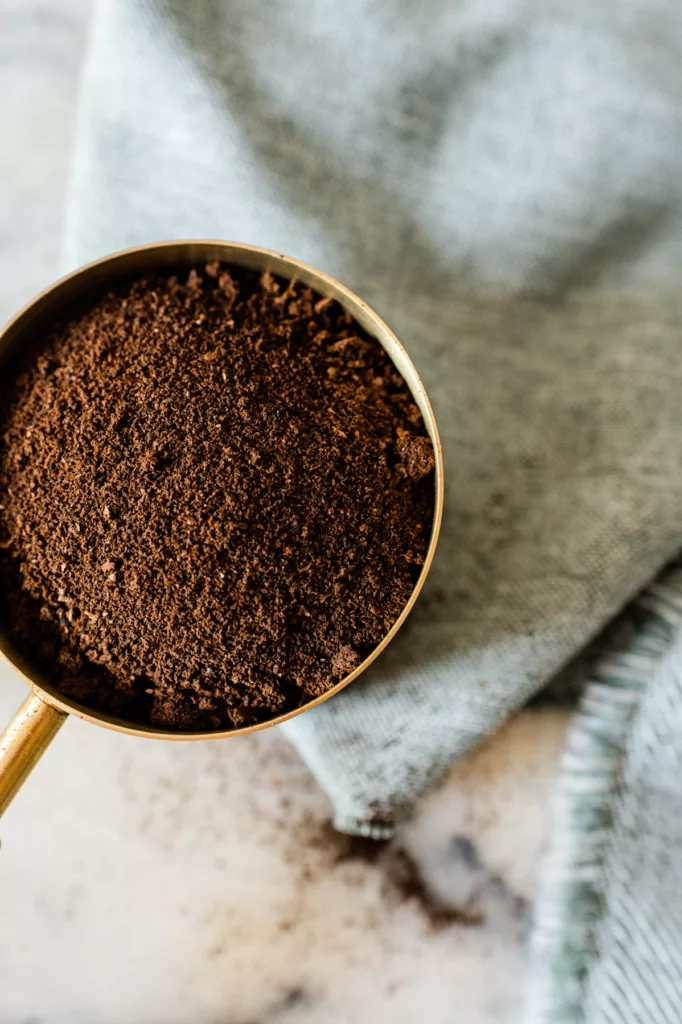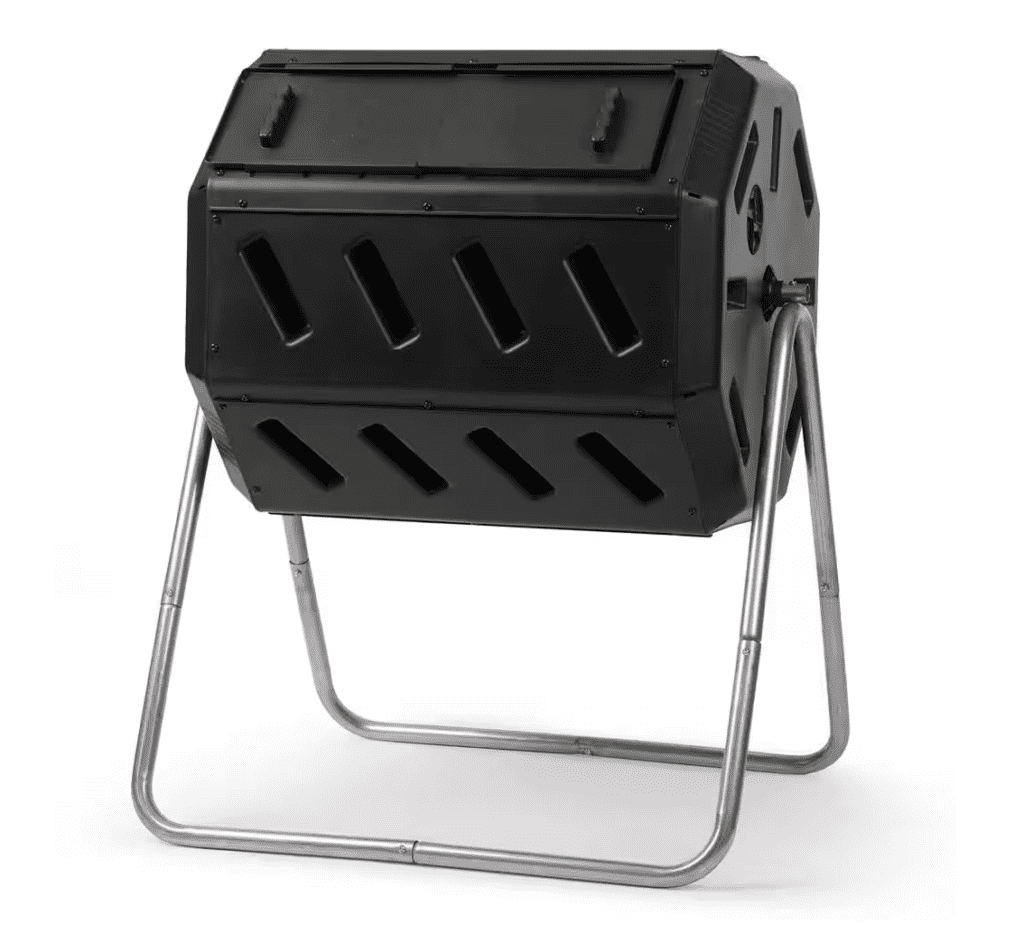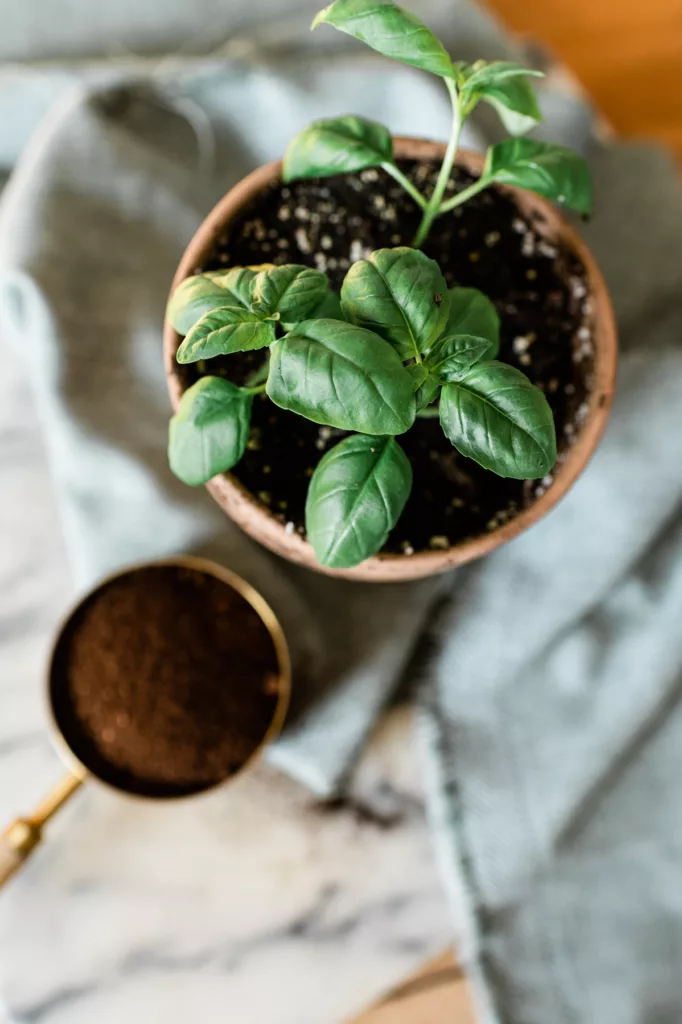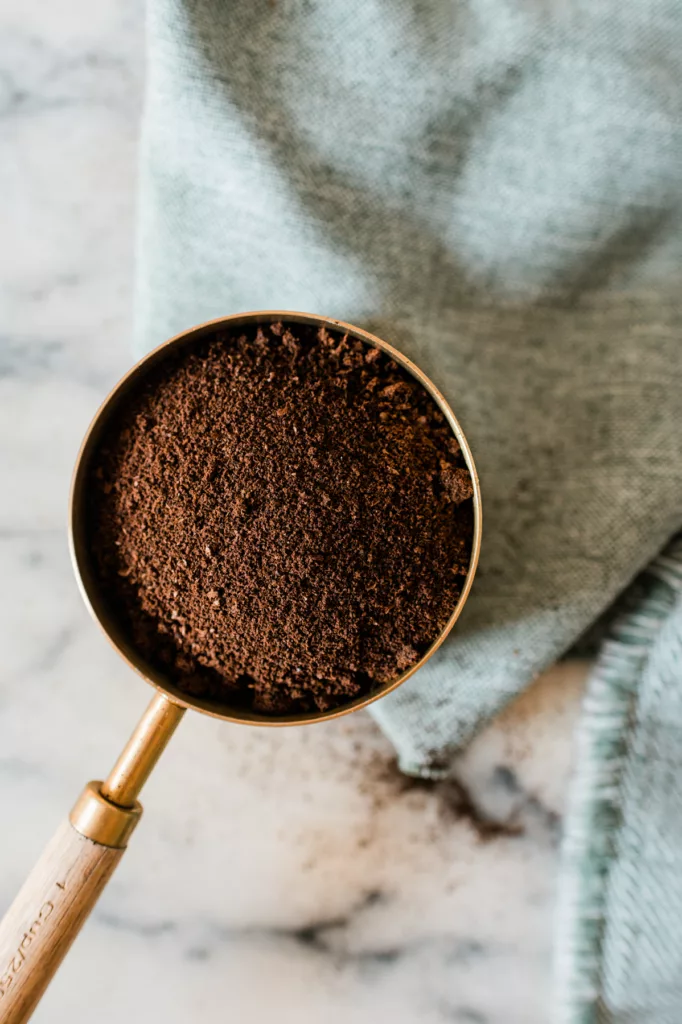Composting is a natural process that breaks down organic matter into nutrient-rich soil. By using coffee grounds in your garden compost, you can create a nutrient-rich environment for your plants to thrive.
There’s nothing quite like the satisfaction of growing your own vegetables and fruits in your garden. The process of planting, nurturing, and harvesting is a rewarding experience that not only provides fresh produce but also connects us with nature. And one of the best ways to nourish your garden is by composting.
Want to start Urban Homesteading? Check out our 6 tips to start RIGHT now and how you can start your own Canning Garden right in your backyard!
The Benefits of Using Coffee Grounds In Your Garden Compost
Coffee grounds are an excellent addition to your garden compost for several reasons:Nutrient-rich: Ground coffee beans contain a good source of nitrogen, phosphorus, and potassium, which are essential for plant growth

Organic matter: Coffee grounds are considered the organic matter, which is important in building healthy soil. Organic matter helps improve soil structure, drainage, and water-holding capacity.
pH-balancing: Coffee grounds are slightly acidic, which makes them an excellent soil amendment for plants that prefer acidic soil, such as blueberries, azaleas, and rhododendrons.
Pest control: Coffee grounds are also known to deter slugs and snails from eating your plants. The caffeine in coffee grounds is toxic to these garden pests, and it can also help repel other insects such as ants.
Sustainability: Using coffee grounds in your garden compost is an environmentally friendly way to dispose of them. Instead of throwing them away, you can give them new life by contributing to the health of your garden.
It’s important not to add too much to your compost pile. Too much can make your compost too acidic, which can be harmful to some plants. Aim for a 20% ratio of coffee grounds to other brown materials.
How to Tell If Your Compost Bin Needs More Brown Compost Material
Smells Like Rotten Eggs
Too much coffee grounds and not enough carbon-rich materials can cause your compost pile to smell like rotten eggs, especially when you turn it. This is a sign to add more brown materials such as dry leaves, dead grass clippings, wood chips, and other brown yard waste to your compost heap, and make sure to turn it well.

Compost Is Soggy
The pile may look and feel slimy if there are too many nitrogen-rich materials in your compost mix and not enough brown materials. Too many coffee grinds and other green compost material and not enough brown matter to offset them may make your compost slimy. To fix the issue add in more dry materials to improve water retention.
How to Compost Coffee Grounds in Your Compost
The simplest way is to add the used grounds to your compost with a mix of green materials and brown materials.
Compost Tumbler:
The best way to compost in an urban setting is by using a compost tumbler.
We love this tumbler from Home Depot!

Tumbling Composter With Two Chambers
The best composter for making your own compost in your backyard!
Add a mixture of brown and green materials, such as leaves, grass clippings, food scraps, and your coffee grounds! As I mentioned important to have a balance of carbon-rich content (brown) and nitrogen content (green) materials in your compost.
The total compost volume shouldn’t reach more than 3/4 full. Tumbling helps to mix the compostable organic materials and encourages the composting process. You can tumble the compost bin a few times a day or every few days, depending on how quickly you want the compost to be ready.
It is a good idea to turn your tumbler composter at least 10 full turns a day. Be sure to check on your composter to monitor the composting process. Composting requires moisture, so add water to the tumbler to keep the compost moist but not soaking wet.
As you compost continue to add organic waste to the tumbler, and make sure to maintain a balance of brown and green materials, while maintaining the moisture with water.
When the compost is ready, it will be dark and crumbly and have an earthy smell. Use a shovel or trowel to remove the compost from the tumbler and use it in your garden or yard. Depending on the size and type of materials you put in the compost, it should be ready within a month if maintained properly.

Traditional Compost Pile:
Start by creating a layer of brown materials, about 6-12 inches thick. Then, add a thin layer of green materials including your used coffee grounds, about 2-4 inches thick. Continue adding alternating layers of brown and green materials until the pile is about 3-4 feet high.
Use a garden hose or watering can to moisten the pile. The compost pile should be kept moist but not waterlogged. If it becomes too dry, the composting process will slow down.
Every few weeks, use a pitchfork or shovel to turn the pile. This helps to aerate the materials and speed up decomposition. If the pile is large, you can use a compost aerator tool to make the job easier.
Continue adding green and brown materials to the pile as you generate them. Try to keep a balance of 2-3 parts brown materials to 1 part green materials.
After several months, depending on the size of your compost pile, the compost will be dark, crumbly, and smells earthy.
How to Use Coffee Grounds Directly In Your Garden Soil
Before dumping the grounds from your morning coffee in your vegetable garden, there are a few steps to take in order to prepare the spent grounds to act as a slow-release fertilizer.
Let them dry: Spread the coffee grounds out on a tray or sheet of paper and let them dry completely. This can take a few days, depending on the humidity in your area.
Add to soil: Once the coffee grounds are dry, you can add them directly to your garden soil. Spread them evenly over the soil surface, and then use a garden fork or tiller to work them into the top layer of soil. Aim for a ratio of one part coffee grounds to two parts soil.
Water well: After adding the coffee grounds to the soil, water the area well to help the grounds settle in and start to break down.
Monitor your plants: Coffee grounds can be a good source of nitrogen, phosphorus, and potassium, which are important nutrients for plants. However, too much of a good thing can be harmful, so keep an eye on your plants and soil to make sure they are not being over-fertilized.

Can You Use Fresh Coffee Grounds in Your Garden Soil?
Fresh coffee grounds are acidic, while used coffee grounds are more neutral. If you are adding fresh coffee grounds to your compost be sure to add a lower nitrogen ratio.
Fresh coffee grounds can be used in your garden soil for acid-loving plants such as blueberries, hydrangeas, carrots, and raspberries. Unbrewed coffee grounds also contain a higher amount of caffeine content. To be safe, avoid using fresh coffee grounds on your seedlings.
Can You Add Paper Coffee Filters To Your Compost?
Yes, you can certainly add paper coffee filters to your compost pile. Coffee filters are typically made from unbleached or bleached paper, which is biodegradable and a great addition to your compost bin! However, there are a few things to keep in mind when composting coffee filters:
Remove any staples or plastic components: Before adding the coffee filter to your compost pile, it is a good idea to check for any staples or plastic components and remove them. These items will not break down and can contaminate your compost.
Shred the coffee filters: Shredding the coffee filters into smaller pieces before adding them to your compost is a great way to speed up the composting process. This will increase the surface area of the paper and allow microorganisms to break it down more quickly.
Balance your compost: Paper filters are considered a “brown” or carbon-rich material, which means they are a good addition to balance out “green” or nitrogen-rich materials such as food scraps or grass clippings. Aim for a ratio of roughly 2:1 carbon to nitrogen in your compost pile.
Watch for mold: Coffee filters can become moldy if they are damp or sit in a compost pile for too long. Make sure to turn your compost regularly and keep it moist but not overly wet to prevent mold growth.

Where to Get Coffee Grounds If You Don’t Drink Coffee
If you don’t drink coffee or don’t drink a lot of coffee, you can still take advantage of the nitrogen fertilizer coffee grounds have to offer. Visit your local coffee shop to see if they can put some aside for you. Most coffee shops such as Starbucks have a garden program in the spring where you can walk in a collect free bags of used coffee grounds from a basket by the front counter.






